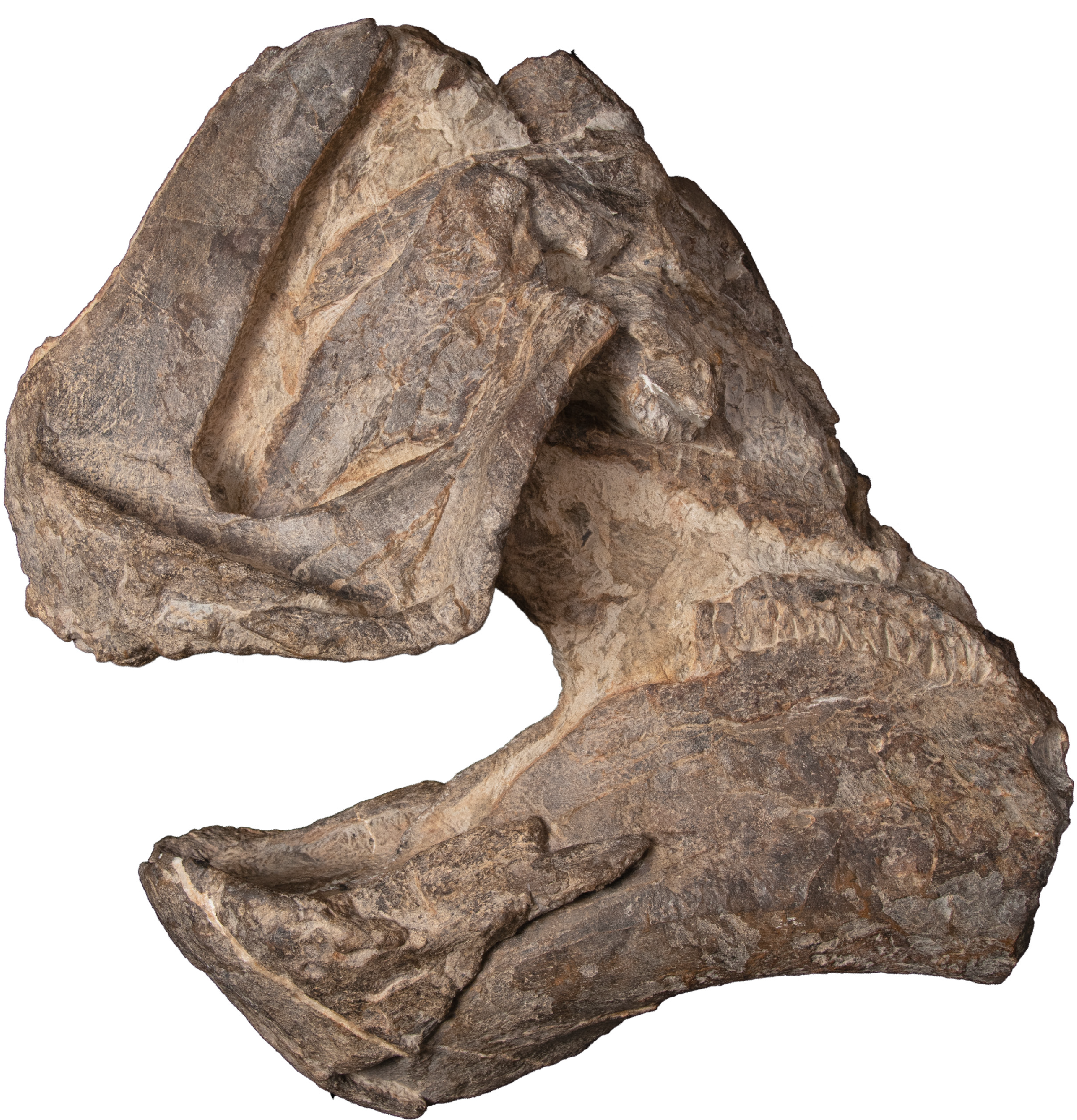Paleontologists have described a brand-new species of duck-billed dinosaur with one hell of a honker, and this giant schnoz – alongside some pretty huge toothlike structures – is part of the reason why they were able to identify it as such.
The new species, dubbed Coahuilasaurus lipani, is thought to have lived around 72.5 million years ago in what is now Mexico, but at the time was the southern part of Laramidia, a Late Cretaceous island continent that was formed when North America split in two.
While duck-billed dinosaurs – or more formally, hadrosaurs – were one of the most common dinosaurs at this time, relatively little is known about those that may have lived in Mexico. In the search to fill in the gaps, researchers have taken to looking in museum collections.
That’s precisely where C. lipani was found, in the form of a partial skull fossil sitting in collections at the National Autonomous University of Mexico, where it had been since it was unearthed in Coahuila in the 1980s – but it was named as that of another species of dinosaur entirely, Kritosaurus navajovius.
The partial skull fossil.
Taking another look, however, revealed that while it was likely still related to the Kritosaurus genus, it didn’t belong to it.
As study author Nick Longrich described in a blog post detailing the team’s findings, “The jaws were too robust, the chin was too prominent.” Not only that, but the fossil had been discovered far from where Kritosaurus had previously been found, and in a formation that indicated it may have been a million years younger.
The unusual shape of its nasal structures, among other subtle differences, also ruled out another genus of hadrosaurs, Gryposaurus.
What really helped solidify the fossil in front of them as evidence of a new genus and species was another giant feature: massive, downturned toothlike structures.
“Although a number of duckbills have these toothlike projections around the edge of the beak, in Coahuilasaurus, they project down from the roof of the mouth. It’s bizarre and unlike any other duckbill I’ve ever seen,” wrote Longrich.
What were these huge projections for? “Presumably, it is an adaption for some kind of tough flora- palms? Cycads? Banana plants? No idea. But it was presumably doing something a bit different than the other kritosaurs.”
The discovery of this new dinosaur just goes to show that it’s often worth taking a second look at what’s hiding in our museums.
“If the IDs are correct, then you’ve learned something. Now you know how to identify that species, or that bone,” wrote Longrich. “If they’re wrong, then you’ve also learned something- maybe part of the skeleton of a species that wasn’t known before, or sometimes, you have an entirely new species.”
The study is published in the journal Diversity.
Source Link: New 73-Million-Year-Old Duck-Billed Dinosaur With Giant Nose Just Dropped
